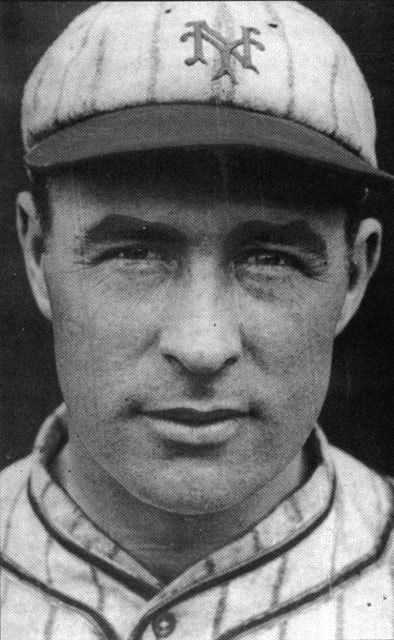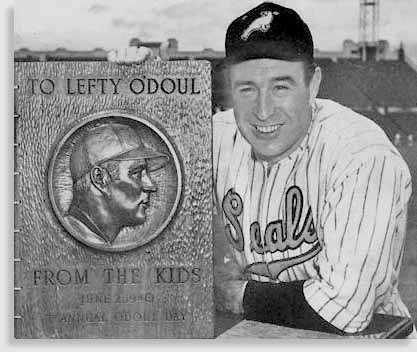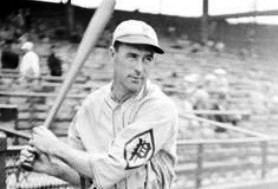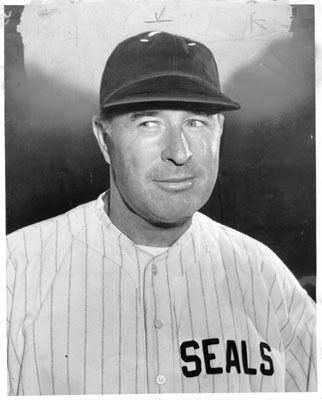Batted Left Threw Left Home runs 113 Weight 82 kg | Batting average .349 Runs batted in 542 Inducted 2002 | |
 | ||
Died 7 December 1969, San Francisco, California, United States | ||
Francis Joseph "Lefty" O'Doul (March 4, 1897 – December 7, 1969) was an American Major League Baseball player who went on to become an extraordinarily successful manager in the minor leagues, and also a vital figure in the establishment of professional baseball in Japan.
Contents

San francisco lefty o doul bridge at t park 1080 hd
Player

Born in San Francisco, California, O'Doul began his professional career as a left-handed pitcher with the minor-league San Francisco Seals of the Triple-A Pacific Coast League. He had some major-league success with the New York Yankees and Boston Red Sox from 1919 to 1923 as a reliever. He pitched in one notable game on July 7, 1923 that would go down in the record books. Relieving for starter Curt Fullerton, O'Doul gave up 16 runs over 3 innings of relief, with 14 of those runs coming in the 6th inning alone. Although errors committed by Red Sox fielders meant that only 3 of the 16 runs were earned, O'Doul set the major league record for most runs allowed by a reliever in one appearance, a record later equaled by St Louis Cardinals pitcher Johnny Stuart in 1925 and Philadelphia Phillies pitcher Dutch Schesler in 1931 (although both needed 8 innings to allow 16 runs). Following the season, O'Doul developed a sore arm, which forced him to give up pitching.

After the 1923 season, the New York Giants returned O'Doul to the Pacific Coast League, where he was converted to a power-hitting outfielder. In 1927 he became one of what are today four Pacific Coast League hitters to have had a 30 home runs, 30 stolen bases season, along with Joc Pederson (2014), Frank Demaree (1934), and Hall of Famer Tony Lazzeri (1925).

O'Doul returned to the majors in 1928, where he batted .319 as a platoon player. In 1929, he was traded to the Philadelphia Phillies and, teaming up with Chuck Klein, had one of the best offensive years in baseball history, leading the league in batting at .398 with 254 hits, 32 home runs, 122 runs batted in, and 152 runs scored. His hit total broke the previous National League record of 250 by Rogers Hornsby of the 1922 St. Louis Cardinals. The record was tied by Bill Terry in 1930.

After batting .383 with 22 homers during the 1930 season, O'Doul was traded to the Brooklyn Robins (now the Los Angeles Dodgers). In 1932, he batted .368 for Brooklyn to win another league batting title. After a slow start in 1933, when he batted just .252 through 43 games, O'Doul was again traded, this time back to the Giants. He rallied to hit .306 the rest of the way that season, but played just one more year before ending his career in 1934.
Manager

O'Doul then returned to the Pacific Coast League as manager of the San Francisco Seals from 1935 to 1951, later managing several other teams in the circuit and becoming the most successful manager in PCL history. One of his outstanding accomplishments while managing the Seals was developing the young Joe DiMaggio, who went on to a Hall of Fame career with the New York Yankees. O'Doul refused to take credit for DiMaggio's success, saying "I was just smart enough to leave him alone."
Legacy
O'Doul was instrumental in spreading baseball's popularity in Japan, serving as the sport's goodwill ambassador before and after World War II. The Tokyo Giants, sometimes considered "Japan's Baseball Team", were named by him in 1935 in honor of his longtime association with the New York Giants; the logo and uniform of the Giants in Japan strongly resemble their North American counterparts.
O'Doul was inducted into the San Francisco Bay Area Sports Hall of Fame in 1981 and the Japanese Baseball Hall of Fame in 2002. He has the highest career batting average of any player eligible for the National Baseball Hall of Fame who is not enshrined. His relatively short career as a full-time batter and the fact that his statistics were accumulated during a period of historically high offensive production in the major leagues are factors mitigating against his selection to the Hall of Fame.
O'Doul's fame and popularity live on in his hometown of San Francisco and are enhanced by the fact that his former team now thrives as the San Francisco Giants. The popular hofbrau-style restaurant and bar he founded still operates as Lefty O'Doul's Restaurant and Cocktail Lounge on Geary Boulevard and still serves his original recipe for Bloody Mary (although one news account says it was modified in the 1960s by O'Doul's bartender Chuck Davis). A bridge over McCovey Cove, near the Giants' home field of AT&T Park, is named the Lefty O'Doul Bridge in his honor. Accordingly, the ballpark plaza and gate entrance adjacent to the bridge are also named after O'Doul.
